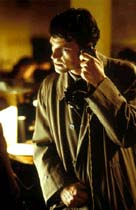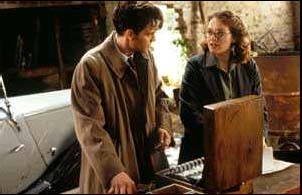|
In order to decrypt a
message, the receiver must have the encrypted message, and
know which rotors were used, the connections on the plug
board and the initial settings of the rotors.
To decrypt a message,
the receiver would set up the machine identically to the way
the sender initially had it and would type in the encrypted
message. The output of typing in the encrypted message would
be the original message.
Although the Germans
didn't know, the Enigma machine was not secure. The number
of possible encryptions was quite large but Polish
mathematicians worked on breaking the systems. They obtained
several Enigma machines and code books from captured
U-boats.
|




